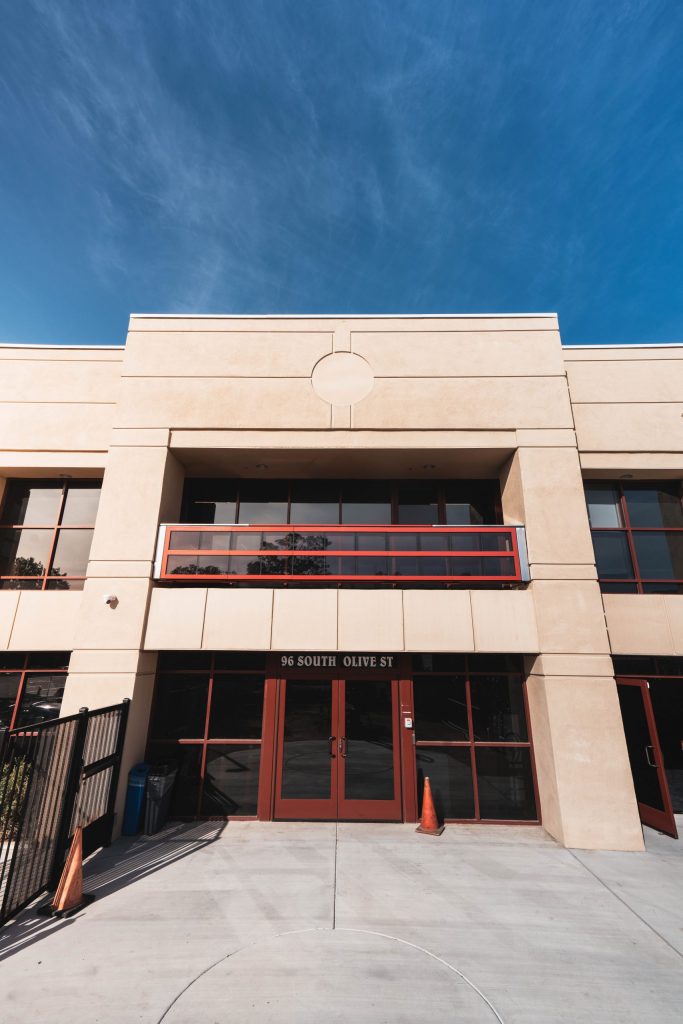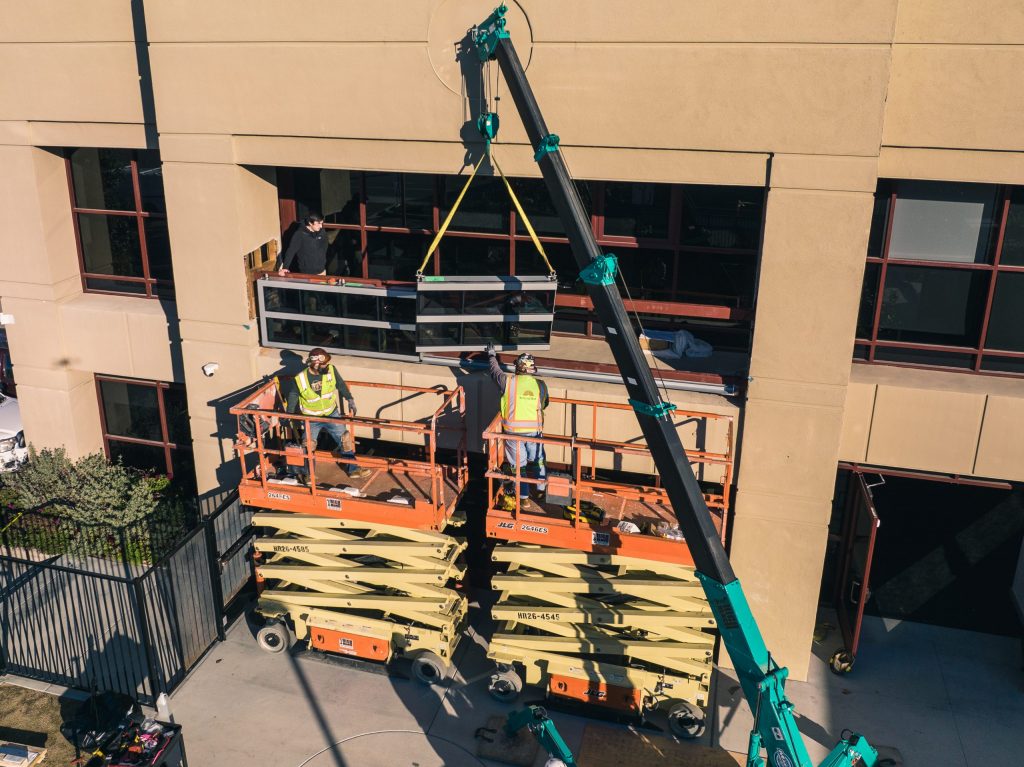Next Energy powers up Patagonia’s HQ
IN THIS ARTICLE
- Latest news Topic
- Jorge Mercado Author
By Jorge Mercado Thursday, January 26th, 2023

Next Energy Technologies has spent the better part of a decade validating the science behind its proprietary solar panel window technology.
But last week, the Goleta-based company received a different type of validation from one of the largest climate-positive companies in the world.
On Jan. 19, Next announced it successfully installed its solar panel windows at Patagonia’s corporate headquarters in Ventura, marking the first time Next’s window technology is being demonstrated on a building while also furthering Patagonia’s commitment to using business to implement solutions to the environmental crisis.
“This is a huge validation and we’re very grateful and humbled to be able to be doing this,” Daniel Emmett, CEO of Next, told the Business Times.
“Even though they’re not a building industry player, they’re an outdoor retail company, going back decades, they have been on the forefront of trying new energy efficiency technologies, solar, renewable energy technologies in a range of their facilities. They were the perfect partner to help showcase the potential of this technology on a building.”
Next installed 22 of the windows on the south-facing facade of the Olive Building on Patagonia’s main campus. The building houses offices, an employee gym and climbing wall, Patagonia said in a press release.
Next’s mission is to help energy-inefficient buildings by providing them with the material to reduce their own energy consumption.
It does this by coating windows with transparent photovoltaic cells, which are solar cells that take light and convert it into electricity, but still allow the light that our eyes can see to come through.
The company estimates that its windows can produce 20% to 30% of the power produced by conventional solar panels alone.
But by leveraging the underutilized surface area of the building facade, as opposed to isolated rooftops, Next’s windows have the potential to produce significant onsite renewable power, offsetting anywhere from 10-40% of a typical commercial building’s energy load, Patagonia said in a press release.
Patagonia has been leveraging solar power at its Ventura HQ since 2005 and the company relies on 100% renewable electricity for its owned and operated facilities in the United States and 76% globally, achieved through on-site and off-site installations.
“Finding better ways of doing business is something we always strive to do and we’re pleased to partner with Next Energy to help us be a more responsible company,” Corley Kenna, head of Communications and Public Policy at Patagonia, said in a press release.
Emmett said that the company had hoped to get its windows installed at Patagonia’s Hawaii retail site around 2019.
But when COVID hit, it sort of pushed the entire timeline back, but it seems to have worked out for the best.
“Actually, we’re really happy to be doing something closer to home because it can be a real showcase for us here locally,” Emmett said.
The next phase of the journey, Emmett said, is producing full-size, floor-to-ceiling, 5-by-10-foot windows.
Originally, Next had planned to house a manufacturing facility in Goleta as well, but a large enough manufacturing space has not been found, he said.
The focus has since shifted to finding window manufacturing partners.
For example, in this project, Next partnered with California-based Walters & Wolf who designed, fabricated, and installed the glazing system integrating Next’s energy-harvesting windows.
The glass fabricator of the module units was performed by SolarFab, a division of GlassFab Tempering Services, Next said in a press release.
“Our commercialization strategy is working hand in hand with window manufacturers, and commercialization partners and we’re in the process of negotiating some of those,” Emmett said.
He added that the passage of the Inflation Reduction Act has also forced the company to switch some things up.
Passed in 2022, the Inflation Reduction Act aimed to curb inflation but also had some language that helped companies which promote clean energy and hold domestic energy production sites.
Next has been in the middle of a capital raise since early 2022, but when the Inflation Reduction Act was passed, the company started from scratch after seeing the benefits.
“There are some great incentives for standing up manufacturing facilities for renewable energy in the U.S. and on the downstream there are these renewed incentives from the Inflation Reduction Act for customers of the solar technology and because we’re domestic manufactured technology, those are even a bit higher,” Emmett said.
“It just changes the math in a way that’s helpful.”
Next still houses over 30 employees in its Goleta headquarters.
Emmett said while he can’t predict exactly when Next windows will be rolled out across the U.S., he’s excited to be in this part of the journey.
“Over the last couple of years we have been getting a few of our prototype units with some of our supply chain partners and customers, but this just feels like a great milestone because it’s our first install on the facade of an actual building,” Emmett said.
“While it’s still a small install, it’s really exciting to actually be on a building.”










